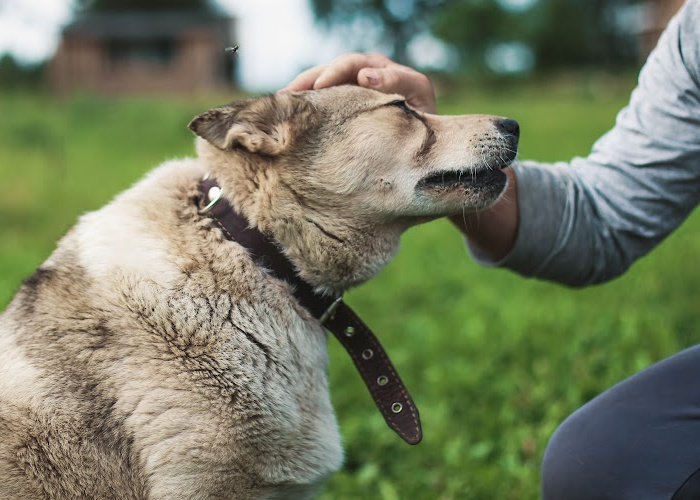It's crucial to know that students with autism and ADHD need special study strategies. Autism…

Can a Dog Be Autistic? Understanding Your Pet’s Behavior
As caring pet owners, we often wonder about the peculiar behaviors our dogs display. Questions like “Can a Dog Be Autistic?” might cross our minds when we notice our furry friends engaging in repetitive actions or struggling in their social interactions.
While autism in canines is not the same as in humans, there’s growing interest in the concept of autistic dog behavior. This area of veterinary research has looked into signs of autism in dogs, giving us insights into the unique ways some dogs may experience the world.
While conclusive diagnosis is challenging, veterinarians and pet experts have observed a range of behaviors potentially linked to congenital conditions resembling autism. Our understanding of this area continues to evolve, as research sheds light on the complexities of canine behavior and neurological health.
Here, we delve into what might be going on in the minds of dogs that exhibit atypical behaviors, and how pet owners can better understand and support their four-legged companions.
Defining Canine Dysfunctional Behavior
When pet owners notice unusual patterns in their dog’s behavior, questions regarding autism in dogs often arise. Veterinary science refers to these patterns as canine dysfunctional behavior a term encompassing a range of symptoms that may resemble those seen in autistic humans.
Recent autism in dogs research has contributed to a deeper understanding, though the condition remains shrouded in mystery and is inherently idiopathic, with no clear point of origin.
What Is Autism in Dogs?
Signs that are often associated with canine autism symptoms include a lack of social interaction with other dogs and people, repetitive behaviors, and sometimes even aggressive tendencies. These are behaviors that could suggest an underlying neurological difference, prompting a potential dog autism diagnosis.
It’s important to understand that these symptoms alone do not confirm a diagnosis. It is, rather, a collection of behaviors that raise questions about neurological diversity in canines.
The Role of Mirror Neurons
Central to the discussion of autism in dogs is the role of mirror neurons in canines. These neurons are fundamental for imitating and internalizing social behavior in dogs. It’s posited that a deficit in these neurons may lead to the kinds of behaviors that we associate with autistic-like conditions, affecting how a dog may learn from and interact with its environment.
Historical Observations and Current Research
The narrative of historical canine autism observations unveils that even though the concept isn’t new, it has gained prominence with time. A critical shift in the autism in dogs research came with the study from the American College of Veterinary Behaviorists (ACVB), which examined Bull Terriers with a predilection for tail chasing.
This peculiar behavior seemed to be a visible indicator that could parallel autism in dogs, offering a window into how these animals experience their own unique set of challenges.
In conclusion, it is the accumulation of anecdotal observations, historical records, and scientific studies like those conducted by ACVB that shape the current understanding of autism-like symptoms in our canine companions, paving the way for more nuanced dog autism diagnosis and relevant research in the future.

Identifying Signs of Autism in Dogs
Recognizing the signs of autism in dogs is pivotal for pet owners to understand their furry companions better. These symptoms can manifest through peculiarities in behavior, such as an inability to interact appropriately with other dogs or humans. Essential to this is noticing any social detachment, where dogs may exhibit a preference for solitude over companionship, deviating from the natural pack-oriented tendencies of canines.
Identifying symptoms of autism in canines might also include the observation of repetitive movements – think about a dog who consistently spins in circles or fixates on licking one spot for prolonged periods. Additionally, autism in dogs can present as an abnormal sensitivity to sensory input, with reactions that seem excessive for the situation at hand.
To address these behaviors, a dog autism treatment plan usually includes interventions designed to alleviate stress and provide a stable environment. While there is no cure for canine autism, supportive measures like creating a consistent daily routine, engaging in gentle, regular exercise, and implementing dietary adjustments can make a world of difference.
When coupled with positive reinforcement and a nurturing home ambiance, these steps aid in enhancing the overall well-being of a dog presenting signs associated with autism. The role of the veterinarian is central, offering guidance on medication when needed and suggesting specific adjustments tailored to an individual dog’s requirements.
Assessing a dog for autisic-like tendencies involves a careful look at how they interact within their environment, and it’s essential to seek professional veterinary advice upon noticing any concerning patterns in your pet’s behavior. A planned approach combining environmental management, and thoughtful care can forge a path to a more stable, comfortable life for dogs showing signs of autism in dogs.
While the condition may pose challenges, the bond between a pet and its owner can still thrive with understanding and the right supportive strategies.

FAQ
Can a dog be autistic?
Dogs can exhibit behaviors that resemble human autism, and such behaviors are categorized in veterinary terms as “canine dysfunctional behavior.” This is believed to be a congenital condition linked to neurological differences. However, it must be understood as distinct from human autism.
What is autism in dogs?
Autism in dogs, also referred to as canine dysfunctional behavior, is characterized by symptoms that mirror autistic traits in humans. It involves difficulties with social interactions, repetitive behaviors, and sensitivity to sensory stimuli. However, it is not autism as defined in humans.
What role do mirror neurons play in canine autism?
Mirror neurons are crucial for puppies learning social behaviors through imitation. A deficiency in these neurons can lead to social deficits that are similar to the signs of autism in canines, and may contribute to the development of canine dysfunctional behavior.
Have there been historical observations or current research on autism in dogs?
Yes, signs that are consistent with autism-like symptoms in dogs have been observed since the 1960s. Notable research includes a 2015 study conducted by the American College of Veterinary Behaviorists (ACVB) that looked into tail-chasing in Bull Terriers as a possible equivalent to autistic behavior.
What are the signs of autism in dogs?
Potential signs of autism in dogs include impaired social interaction, such as reluctance or withdrawal from other animals and people, limited communication, repetitive actions, hypersensitivity to sensory input, and unusual reactions to everyday situations. Each dog may exhibit a unique combination of these symptoms.
Is there a treatment for autism in dogs?
While there is no cure for canine autism, treatment usually focuses on improving the dog’s quality of life. This may involve environmental enrichment, establishing a consistent routine, maintaining an appropriate diet, ensuring regular exercise, creating a comfortable and safe space, and medication as prescribed by a veterinarian.



This Post Has 0 Comments